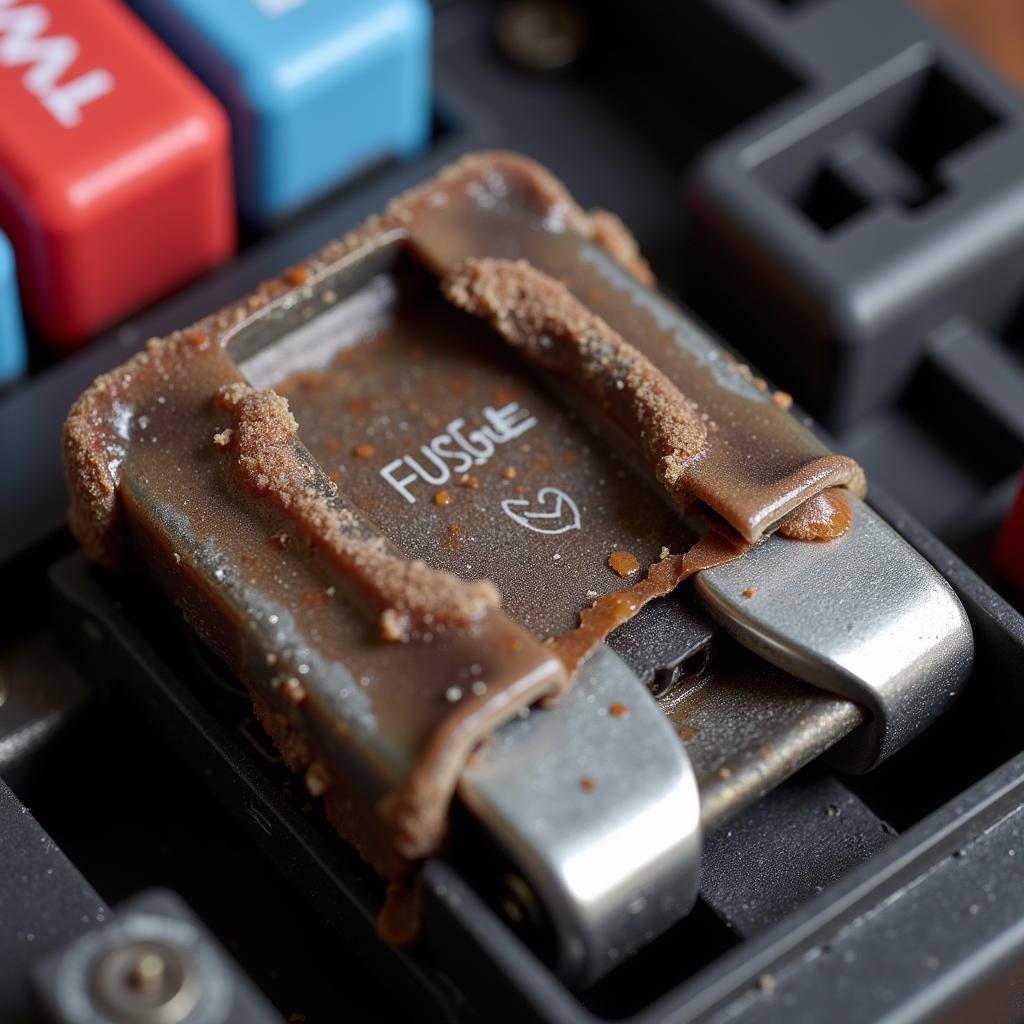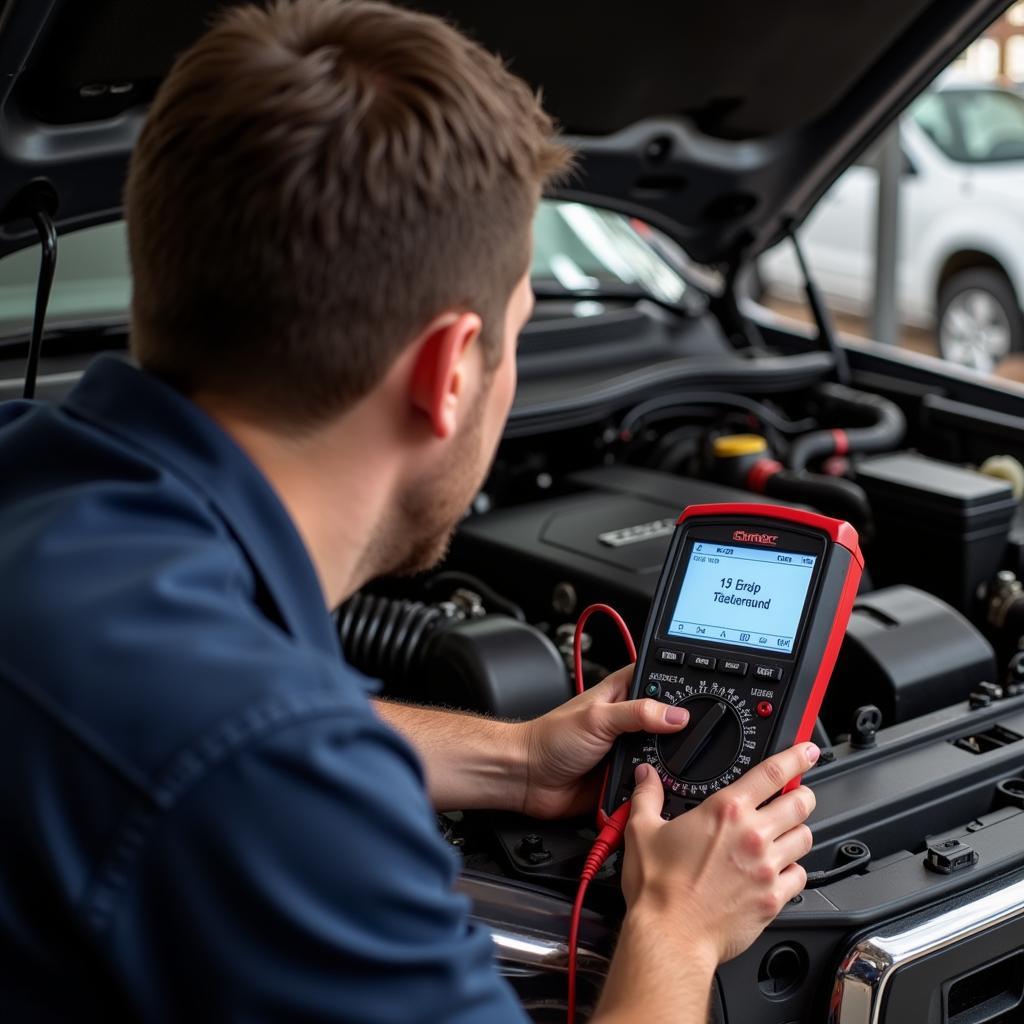A glowing brake warning light on your GMC dashboard can be a nerve-wracking experience. While it could be a minor issue, it’s crucial to address it promptly as it points to a potential problem within your braking system. This article delves into the common causes of a GMC brake warning light fuse issue and provides troubleshooting tips to help you get back on the road safely.
Understanding Your GMC Brake Warning Light
The brake warning light, often depicted as a red circle with the word “BRAKE” or an exclamation mark inside, is your vehicle’s way of signaling a problem with the braking system. When this light illuminates, it could indicate several issues, from a simple engaged parking brake to more complex problems like low brake fluid levels or a faulty brake light switch.
The Role of the GMC Brake Warning Light Fuse
The brake warning light fuse plays a critical role in ensuring the warning light functions correctly. This fuse protects the electrical circuit responsible for illuminating the brake warning light on your dashboard. If this fuse blows, the warning light won’t turn on, even if there’s a problem with your brakes.
Common Causes of a Blown GMC Brake Warning Light Fuse
Several factors can cause the brake warning light fuse to blow, including:
- Short Circuit: A short circuit in the wiring harness connected to the brake light switch or the warning light itself can overload the circuit and blow the fuse.
- Worn-out Brake Light Switch: Over time, the brake light switch, responsible for sending signals when you press the brake pedal, can wear out and short circuit, potentially blowing the fuse.
- Faulty Wiring: Damaged or corroded wiring in the brake light circuit can also lead to a blown fuse.
- Water Damage: Exposure to water or moisture, especially in the area where the fuse box is located, can corrode the fuse and cause it to blow.
Troubleshooting a Blown GMC Brake Warning Light Fuse
 Blown Fuse GMC Brake Light
Blown Fuse GMC Brake Light
Before attempting any troubleshooting, ensure your vehicle is parked on a level surface, the engine is off, and the parking brake is engaged.
- Locate the Fuse Box: The fuse box is typically located under the dashboard on the driver’s side or in the engine compartment. Refer to your GMC owner’s manual for the exact location.
- Identify the Brake Warning Light Fuse: Open the fuse box cover. The cover usually has a diagram indicating the location of each fuse. Find the fuse labeled “Brake Warning,” “Stop Lamp,” or similar.
- Inspect the Fuse: Carefully remove the fuse using a fuse puller or pliers. Examine the fuse closely. A blown fuse will have a visible break or burn mark in the metal strip.
- Replace the Fuse: If the fuse is blown, replace it with a new fuse of the same amperage rating. The amperage rating is printed on the fuse itself or listed in the owner’s manual.
- Test the Brake Warning Light: Turn on the ignition (don’t start the engine). The brake warning light should illuminate briefly and then turn off. If the light doesn’t turn on, further diagnosis by a qualified mechanic is recommended.
Pro Tip from John Miller, ASE Certified Master Technician: “Never replace a fuse with one of a higher amperage rating. This can overload the circuit and cause serious damage to your vehicle’s electrical system.”
When to Seek Professional Help
If replacing the fuse doesn’t resolve the issue or the fuse blows again shortly after replacement, it’s best to seek professional help. Recurring blown fuses often indicate a more serious electrical problem that requires a mechanic’s expertise.
 GMC Mechanic Diagnosing Brake Light Issue
GMC Mechanic Diagnosing Brake Light Issue
“A properly functioning brake system is crucial for your safety,” advises Sarah Thompson, Lead Automotive Electrician. “Don’t ignore a persistent brake warning light. Address the issue promptly to avoid potential hazards on the road.”
Conclusion
Addressing a GMC brake warning light fuse issue starts with understanding its role and common causes. While a simple fuse replacement might solve the problem, persistent issues warrant professional attention. Remember, your safety on the road depends on a fully functional braking system.
FAQs
Q: What happens if I drive with a blown brake warning light fuse?
A: Driving with a blown brake warning light fuse won’t directly affect your brakes. However, it means you won’t be alerted if there’s an actual brake problem, increasing the risk of an accident.
Q: Can I replace the fuse myself?
A: Replacing a fuse is a straightforward task. Locate the correct fuse using your owner’s manual, remove the blown fuse, and replace it with a new one of the same amperage.
Q: How often should I check my brake warning light fuse?
A: It’s good practice to visually inspect all your vehicle’s fuses during regular maintenance checks, even if you haven’t experienced any problems.
Q: Can a blown brake warning light fuse drain my battery?
A: A blown fuse itself won’t drain your battery. However, the underlying electrical issue that caused the fuse to blow might draw power and drain the battery over time.
Q: What should I do if the brake warning light stays on after replacing the fuse?
A: If the warning light remains on, it indicates a problem beyond the fuse. Consult a qualified mechanic to diagnose and fix the issue.
